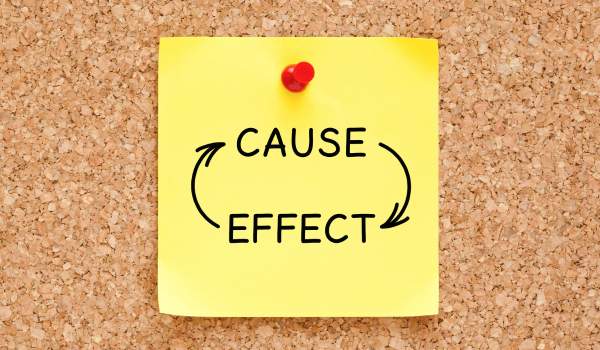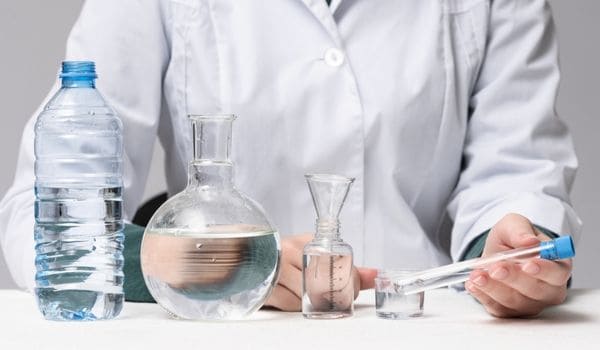Arsenic might sound like something you’d only hear about in old crime stories, but it’s still a concern—especially if your home uses well water. You won’t notice it by smell or taste, and that’s what makes it so tricky. And if you don’t test for it, you’ll never know it’s there.
According to the EPA, tens of millions of Americans may be exposed to unsafe arsenic levels through private wells. The good news? Testing for arsenic is simple—and fixing it is easier than you think.
Let’s walk through exactly how to test for it, what the results mean, and what you can do if it shows up in your water.
🧠 Quick Takeaways
- ✅ Arsenic Is Tasteless and Odorless – You won’t detect it without a water test
- 🔬 Private Wells Are Most At Risk – Unlike city water, there’s no required testing or treatment
- 🧪 Lab Tests Are More Reliable Than DIY Kits – Mail-in kits like Tap Score use certified labs for accuracy
- 🚱 Boiling Makes Arsenic Worse – It concentrates the contaminant instead of removing it
- 🚿 Not All Filters Remove Arsenic – Pitcher filters won’t cut it—look for RO, distillation, or anion exchange systems
☠️ What You Should Know About Arsenic

Arsenic shows up naturally in rock and soil, but not all forms are the same. Some are harmless—others, not so much. The version most likely to make its way into drinking water is called inorganic arsenic, and it’s the one to watch out for.
We’re all exposed to tiny amounts from food and water. But when it starts building up in a private well? That’s when it becomes a real issue.
According to the CDC, the average person takes in small traces of arsenic every day without even realizing it. Over time, that can add up—especially if your water’s not being tested.
💧 Where Arsenic Comes From
Most arsenic contamination doesn’t come from pipes or city water—it comes from the ground itself. Private wells are especially at risk because they tap directly into untreated groundwater.
🌍 How It Gets Into Wells
- Natural Bedrock Groundwater can absorb arsenic as it flows through rock layers underground.
- Old Industrial Sites Areas with past mining, manufacturing, or chemical dumping often have lingering arsenic contamination.
- Agricultural Runoff Arsenic was once used in pesticides and livestock feed. It can still linger in soil and leach into nearby wells.
- Volcanic Zones & Gas-Producing Areas Arsenic levels tend to be higher near geothermal or fossil fuel extraction regions.
- Pressure-Treated Wood Some older decks, fences, or landscaping lumber still contain arsenic, and runoff can carry it into soil.
Many states, like Maine, recommend testing your well every five years—more often if you live near known hotspots. You can always check with your water department to see if there’s history of arsenic in your area — it’s free info.
🩺 What Long-Term Exposure Can Do

Short-term exposure to high levels of arsenic in drinking water is rare, but it can cause things like headaches, nausea, and stomach issues. Most people are more likely to experience low-level exposure over time—which is where the bigger concerns start to show up.
🚨 Long-Term Risks May Include:
- Skin changes or discoloration
- Digestive issues
- Nerve sensitivity or fatigue
- Higher risk of certain cancers (bladder, lung, skin)
- Potential links to heart problems or blood sugar imbalances
The EPA limits arsenic in public water systems to 10 parts per billion (ppb). But if you’re on a private well, no agency is monitoring your water for you—it’s up to homeowners to test and treat if needed.
🍼 Is Bottled Water a Safer Bet?
Not always. While bottled water is often marketed as pure, most brands are just filtered tap water—and they’re not all tested for arsenic the same way.
Some bottled brands have shown surprisingly high arsenic levels in the past. And even though the FDA sets a limit of 10 ppb for bottled water, some older state-level standards still allow up to 50 ppb.
If you’re relying on bottled water for safety, it might be time to double-check the label—or better yet, test your own water and install a system you can trust.
🔎 How to Spot Arsenic Risk

Unfortunately, you won’t notice arsenic just by looking, tasting, or smelling your water. It’s completely invisible without testing.
If you live in an area with a history of industrial activity, mining, or naturally high arsenic in the bedrock, you’re more at risk.
Your local health department or geological survey might also have reports on arsenic hotspots in your region.
But when it comes down to it, the only way to know for sure is to test your water. Luckily, it’s easier (and cheaper) than most people realize.
🧪 How to Test Your Water Safely

When it comes to arsenic, guessing isn’t good enough. Testing is the only way to know if your water is safe—and not all tests are created equal.
🧰 Testing Options at a Glance
| 🔍 Method | 🧠 Pros & Cons |
|---|---|
| 🎨 Color Test Kits | Low cost, but hard to read and less accurate for low-level contamination |
| 📦 Mail-In Lab Kits | High accuracy with easy sample collection — no guessing on results |
| 🏢 Direct Lab Testing | Best for complex cases; more expensive and may require drop-off |
For most homeowners, a mail-in test kit offers the best balance of ease, price, and reliability.
Services like Tap Score partner with certified labs, so you get results you can actually trust.
Once you know your arsenic levels, you’ll be ready to pick a treatment system that fits your home, budget, and long-term health goals.
🚰 Picking a Filter That Works

Not all filters are equipped to handle arsenic. Basic carbon filters, like the ones in pitcher systems, won’t remove it. You’re going to want something that’s specific to your needs — here’s some solid options:
| 🔧 System | 🏠 Best For | ⚡ Key Strength |
|---|---|---|
| 💧 Reverse Osmosis | Drinking water at a single tap | Removes up to 95% of arsenic + other contaminants |
| 🔥 Distillation | Low daily water needs | Removes up to 98% of arsenic |
| 🧪 Activated Alumina | Point-of-use or whole-house systems | Reduces arsenic by 90–95% without adding aluminum |
| 🔄 Anion Exchange | Higher-flow whole house systems | Removes arsenic and other negatively charged contaminants |
If your main goal is safe drinking water at the tap, a countertop or under-sink system might be all you need.
If you want protection throughout your whole home—including showers and laundry—you’ll need a whole-house system.
📋 Before You Buy
Picking the right system isn’t just about arsenic—it’s about matching your setup, lifestyle, and budget too. Here’s what to keep in mind:
- 🧪 Contaminants Test results matter. Some filters remove arsenic but not sulfur or nitrates. Make sure you’re covering all the bases.
- 📦 Capacity Needs Distillers work great—but they’re slow. Big families may need faster, high-output options like reverse osmosis.
- 🏠 Space Requirements Whole-house systems need more room and protected installation areas (basements, garages). Countertop and under-sink filters are compact and fit just about anywhere.
- 💵 Budget Whole-house units offer full coverage but cost more up front. Under-sink RO filters can deliver safe drinking water for less than $600.
- 🛠️ Installation & Maintenance DIY setups save money. Whole-house systems often require pro installation and scheduled servicing.
No matter which option you choose, the right filter paired with a reliable water test is your best defense against long-term arsenic exposure.
🧼 Final Thoughts
Getting your well water tested is the first step toward peace of mind. If arsenic shows up, the good news is—you have options.
With the right filter in place, you can enjoy safer, cleaner water without second-guessing what’s coming out of your tap.
Because better water isn’t just about taste—it’s about long-term health.
 120 people found this helpful. Was this guide helpful to you?
120 people found this helpful. Was this guide helpful to you? 

